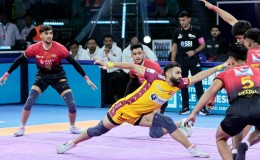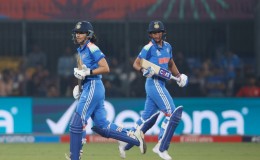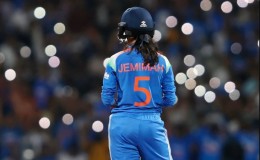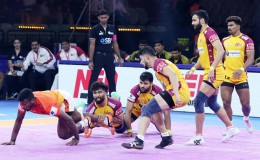Marylebone Cricket Club has on Tuesday launched a new set of animations aimed to help young players, novices and casual fans develop a greater understanding of the Laws of Cricket.
The animations, which have been released in English, Hindi and Urdu, focus on five of the more complex and misunderstood aspects of the Laws – including LBW and running out the non-striker. It is the first time that the Club has portrayed the Laws in this way.
The actor, broadcaster and writer Stephen Fry, a well known cricket enthusiast and occasional umpire, brings his authoritative voice to the English narration, with Emmerdale actor Bhasker Patel and former Pakistan batsman Rameez Raja providing the oral wisdom to the Hindi and Urdu versions respectively. They are aided in their teaching endeavours by ‘Tommy’, an animated young cricketer who learns from the Law simulations – which take place on a blackboard.
Speaking about the launch of the Laws animations, MCC Head of Cricket, John Stephenson, said: “Every week around the world thousands of people search online to find out information about the Laws of Cricket, in particular what certain Laws mean and how they translate on the field. Anyone who plays cricket – from the village green in England to the maidan in India – plays by Laws written by MCC; it is essential therefore that the Club continues to communicate the Laws as clearly as possible, and utilises modern technology to demonstrate some of the more complex Laws to the next generation of cricketers.”
Stephen Fry spoke to Lord’s TV about these animations:
“We hope these make cricket easier to understand, simpler to read as a game and give a great deal more pleasure in what is the greatest game man has ever devised.“
MCC was founded in 1787 and its first code of Laws was adopted in May 1788. The Club continues to own the Laws – and act as the guardian of the Spirit of Cricket – today.
The animations are available to view on the Club’s website (http://www.lords.org/mcc/laws-of-cricket/) and on its YouTube Channel (www.youtube.com/lordscricketground).
The launch date for the new animations is timed to coincide with the inauguration of the fifth edition of the 2000 code of the Laws – which takes effect in all cricket from today (October 1st 2013).
The most high profile change is a new No ball Law (Law 24.6) which makes it a No ball if the bowler breaks the wicket during his delivery stride. The MCC Committee announced that the Law would be changed in February of this year and the ICC brought the ruling in as a playing regulation for the international summer.
Other changes to the Laws include limiting being out Handled ball to just the striker as he is playing the ball or immediately after; any other illegal handling of the ball by either batsman will be given out as Obstructing the field.
Noteworthy changes to the Laws from October 1st 2013:
- A new No ball Law (24.6) making it a No ball if the bowler breaks the wicket during his delivery stride.
- A batsman with a runner is now protected if he is ‘stumped’ off a No ball. Previously, he would have been out run out.
- The moment at which a batsman can be out Handled the ball has been limited to when he is playing the ball or its immediate aftermath, i.e. when defending his wicket. Consequently, only the striker can be out this way. Any subsequent handling by either batsman will be subject to Obstructing the field.
- Hit the ball twice – it is no longer possible to score any runs after making a lawful second strike (in defence of his wicket). Previously, runs could be taken after a lawful second strike only after an overthrow had occurred, but this option of run scoring has been removed completely.
- Practice on the field – players are now allowed to bowl a ball to a fielder as a ‘loosener’, even if it bounces on the ground, as long as it does not waste time or is not being done to damage the ball.
For a full list of changes to the Laws, explanations for the changes, advice and examples of their application, please visit http://www.lords.org/mcc/laws-of-cricket/law-changes-2013-explained/









